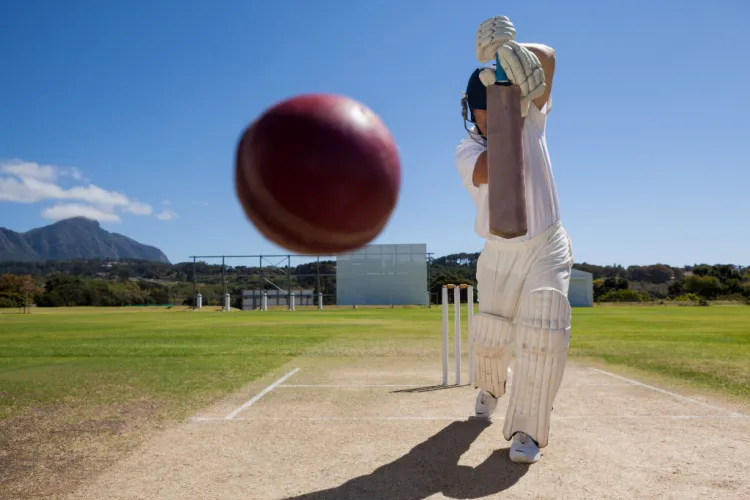
Ah, cricket. A game so deeply ingrained in our history, it’s now a pillar of our culture. Dating all the way back to 14th century medieval England, what started as a children’s game, quickly became a globally recognised sport. The first-ever international cricket match took place in 1844 between teams from the United States and Canada. By the middle of the 19th century, its popularity had spread far and wide. Once it hit our shores, Australia and New Zealand took to the game like a duck to water.
In 1876, the Melbourne Cricket Ground (MCG) hosted its first-ever match between England and Australia. This was the beginning of the English and Australian rivalry and the most famous contest of them all, The Ashes. The Boxing Day Test match is another significant event for homegrown cricketers – born in 1950 and running annually ever since; the test features Aussies’ finest cricketers pitted against an opposing national team – this year, we’ll see South Africa take on Australia.
So, what is it about this historic bat and ball sport that our nations love so much? Here, we take a closer look at what’s behind our passion for cricket.
The top 4 cricketing legends from down under
We’ve been blessed with some incredible talent on our shores, and while we can’t name them all, in no particular order, four of our favourites are:
- Don Bradman (Australian) – not only the best batsman but easily the best player of all time. His average of 99.4 dwarfs everyone else in the history of the game.
- Shane Warne (Australia) – the man who made leg spin bowling ‘sexy’ while everyone else realised how difficult an art it was.
- Kerry Packer (Australia) – revolutionising cricket in the 70′s with his breakaway World Series cricket. He also introduced coloured clothing and night games.
- Richard Hadlee (New Zealand) – the great Kiwi all-rounder. He achieved icon status through his remarkable bowling deeds that encompassed the world test mark.

Adelaide gets a piece of the action
There’s no doubt that sport contributes significantly to the economy. A recent study by the Australian government discovered that the sports industry, with the exclusion of animal racing operations, is estimated to have directly contributed $14.4 billion towards Australia’s GDP in 2016/17 (representing 0.8 per cent of GDP). Cricket is a significant contributor to this overall picture, and South Australia witnessed this first-hand recently when hosting the 2022 ICC T20 World Cup and a pre-tournament at The Adelaide Oval. The South Australian Minister for Recreation expressed his excitement, stating, “Adelaide will get a piece of some incredible cricket action, and we hope the game’s superstars can inspire the next generation of South Australian players.”
Always evolving
In the 1990s, the popularity of cricket started to wane. This inspired a major campaign to get attendance back up. Floodlights for day-to-night matches drew large evening crowds, rules were adapted to make a long game more exciting, and now with better technology, we get to see and hear the players themselves – allowing fans to get closer to the action than ever before. Cricket has come a long way, and it’s a great accomplishment to remain the most popular sport across Australasia.
The cricketing spirit
In countries like Pakistan and India, people eat, sleep, and breathe cricket. It’s a sport that brings people together, is accessible to all, and is incredibly social. In Australia, it serves the same purpose. Cricket legend Sir Donald Bradman once said, “it is the responsibility of all those that play the game to leave it in a better state than when they first became involved.”
To improve inclusivity and representation, Cricket Australia continues to make policy changes. For example, women’s cricket was given a more prominent platform when the International Women’s Cricket Council (IWCC) officially integrated into the International Cricket Council (ICC) in 2005. This provided greater exposure for the women’s game than ever before. It was a (literal) game-changer.
A sport to bring us together
Whether it’s backyard cricket on Christmas Day or playing on a global stage, our love for cricket runs deep. Saying it’s a fundamental part of our culture is no exaggeration. It will continue to provide valuable economic benefits to the country while, at the same time, remaining something that’s accessible and fun for all to get involved in. Cricket is more than a sport; it’s part of who we are and will continue to leave its mark for years to come.
DISCLAIMER
The following advice is of a general nature only and intended as a broad guide. The advice should not be regarded as legal, financial, or real estate advice. You should make your own inquiries and obtain independent professional advice tailored to your specific circumstances before making any legal, financial or real estate decisions. Click here for full Terms of Use.
-
7 months agoBig Smoke or Big on Lifestyle? 10 Big Benefits of Rural or Regional Living
-
7 months agoPet-friendly and Stylish? Your Home Can Be Both!
-
7 months agoWhy Tiny Homes Are a Big Deal

